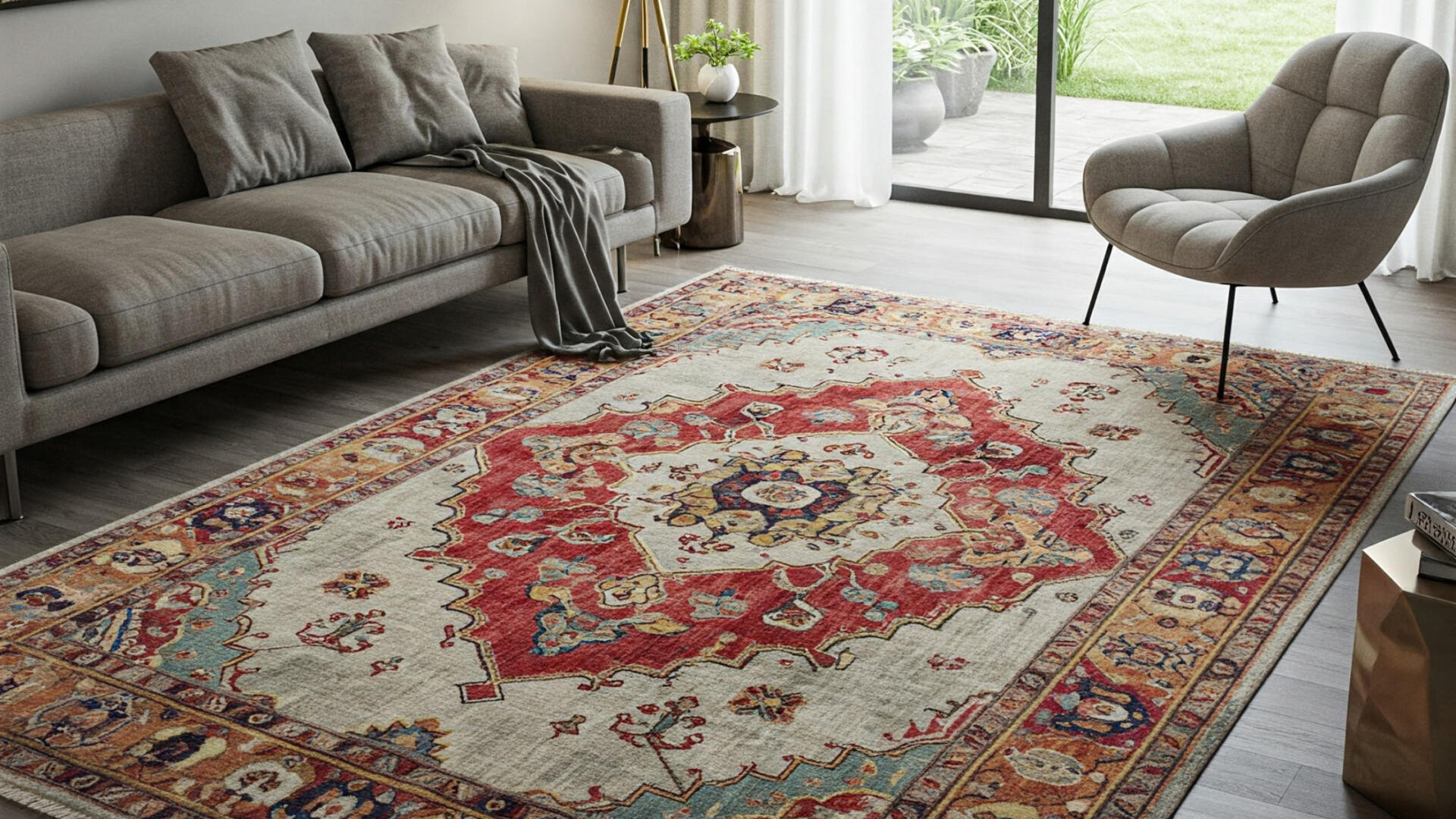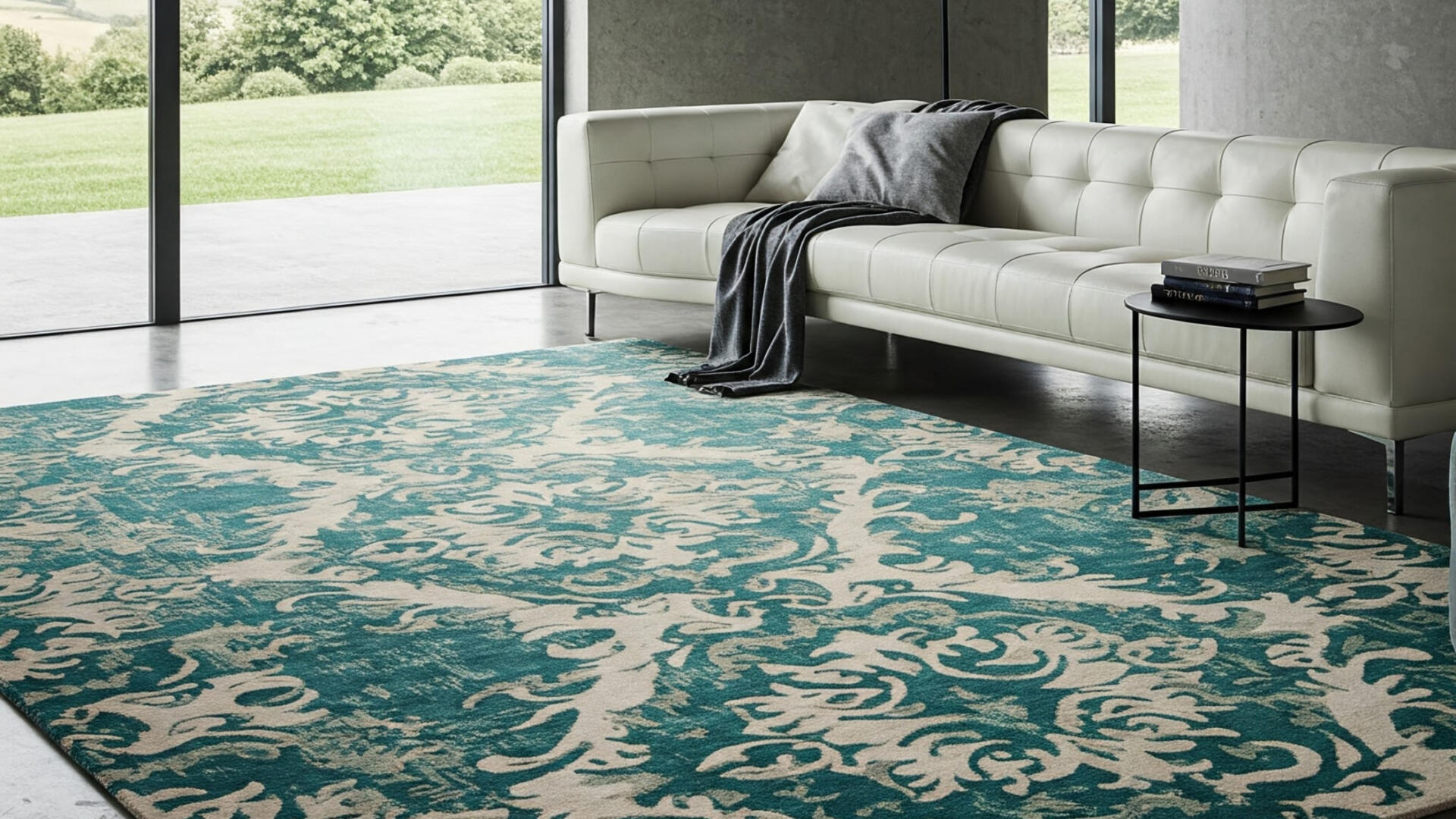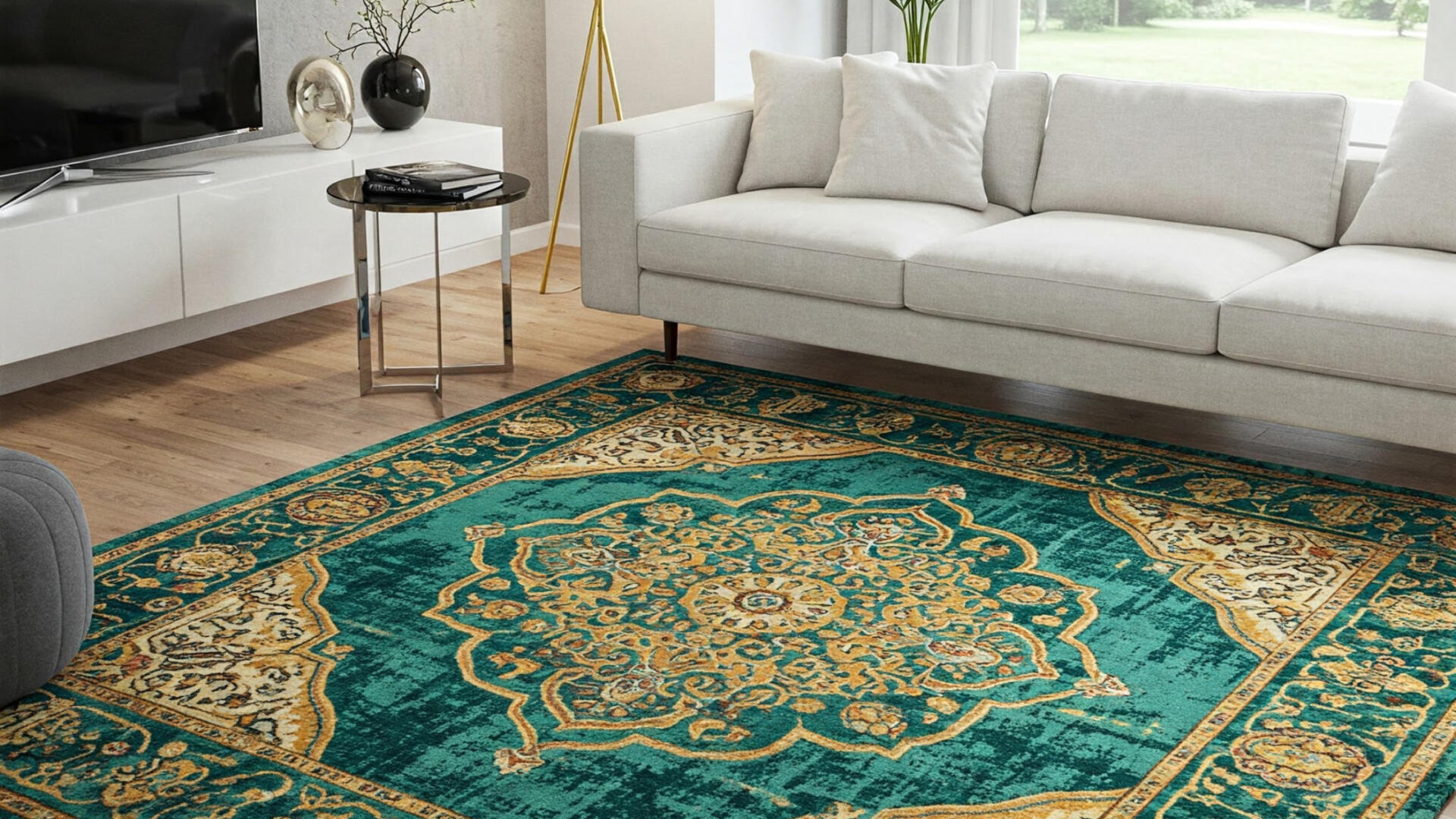Carpets have long been a symbol of culture, luxury and craftsmanship. From Persian palaces to Indian royal courts, they have graced interiors with elegance and sophistication. We believe in the power of design to tell a story, one that is deeply rooted in tradition yet seamlessly blends into contemporary aesthetics. Motifs are repeated patterns or emblems that carry historical and cultural significance. A motif forms the foundation of carpet design.
Motifs in Carpet Design
Motifs carry deep symbolic meanings and reflect the cultural heritage of the regions they originate from. These patterns often stem from nature, mythology, geometry and religious influences. Over centuries, artisans have passed down these designs, preserving them while also adapting them to changing tastes.

The Gul Motif: The Tribal Emblem
The Gul motif is a prominent feature in Turkmen and Persian carpets. Arranged in octagonal or floral forms, this motif is believed to represent tribal symbols. Each variation signifies a particular clan or family. Traditionally Gul patterns are woven in deep reds, blues and earth tones. Gul patterns bring a sense of structure and symmetry to carpets. They have a timeless appeal, making them a favourite in both traditional and contemporary interiors.
The Chevron Motif: A Symbol of Movement
The Chevron motif is characterised by its distinct zigzag pattern. It represents energy and dynamism. This design can be traced back to ancient Greece and was widely used in Roman and Islamic architecture. When incorporated into carpets, the Chevron pattern creates a sense of direction and rhythm. It is a popular choice for modern interiors, adding a touch of playfulness to an otherwise structured space.

The Herati Motif: Fish and Flowers
Herati is one of the most widely used motifs in Persian carpets. The Herati motif is an intricate blend of floral and geometric patterns. It consists of a central rosette surrounded by curved leaves and fish-like figures, forming a harmonious composition. The fish symbol, often associated with prosperity and good fortune, gives this motif a deeper meaning. The Herati design is ideal for spaces that seek a balance between tradition and modernity.
The Medallion Motif: The Heart of Elegance
The Medallion motif is one of the most striking and recognisable patterns in carpet design. Typically occupying the centre of the rug, this motif is inspired by Persian manuscripts, celestial symbols and architectural elements. The medallion may be circular, oval or hexagonal, often surrounded by intricate floral or geometric borders. This design is perfect for adding grandeur to a room, making it a focal point of artistic expression.
The Damask Motif: Luxurious Aesthetic
The Damask motif originates from the ancient city of Damascus. The Damask motif is known for its ornate floral and foliate patterns. Often used in textiles, wallpapers and carpets, Damask designs exude sophistication and refinement. These patterns, usually rendered in contrasting colours, create a rich and opulent effect. Incorporating Damask carpets into interiors can instantly elevate the ambience, making them a preferred choice for luxurious settings.

The Paisley Motif: A Symbol of Eternity
The Paisley motif is also known as the ‘buta’ or ‘boteh’ in Persian and Indian traditions. It is a teardrop-shaped design that symbolises eternity and spirituality. This motif has been widely used in Kashmiri shawls, Persian carpets and even modern fashion. The flowing form of the Paisley pattern adds a sense of movement and grace. This makes it a versatile choice for both traditional and contemporary decor.
The Boteh Motif: A Precursor to Paisley
Closely related to Paisley, the Boteh motif is an ancient Persian design that resembles a sprouting seed or a leaf. It is often interpreted as a symbol of growth, renewal and life. Used extensively in Persian carpets and Indian textiles, the Boteh motif blends well with floral and vine patterns, lending an organic feel to interiors.
The Shah Abbasi Motif: A Floral Extravaganza
Named after Shah Abbas I of Persia, this motif is characterised by its elaborate floral compositions. It typically features stylised lotus flowers, tulips and palmettes, creating a regal and ornamental effect. This motif is typically found in Kashan carpets, showcasing Persian artistic excellence. These intricate patterns make a striking statement in contemporary homes that appreciate craftsmanship and artistry.
The Vine and Scroll Motif: Nature’s Elegance
Vine and scroll patterns symbolise growth, continuity and harmony. These motifs are often found in Persian and Mughal carpets. They are inspired by botanical elements and arabesque designs. The continuous flow of vines and leaves creates a sense of movement. These carpets are an excellent choice for spaces that seek a touch of nature-inspired elegance.

The Geometric Motif: Precision and Perfection
Geometric motifs have been used in Islamic and Central Asian carpet designs for centuries. Featuring precise shapes like hexagons, diamonds and interlocking polygons, these patterns are often associated with mathematical harmony and balance. Geometric designs are particularly suited for modern and minimalist interiors, providing structure and depth without overwhelming the space.
The Timeless Appeal of Motifs in Contemporary Design
While these motifs are steeped in history, they continue to influence modern carpet design. We keep learning about such motifs and the fusion of heritage and contemporary aesthetics. Our carpets incorporate these timeless motifs while adapting them to suit present-day interiors. A classic Medallion rug for a luxurious living room or a Chevron-patterned carpet for a modern workspace, these designs continue to resonate with art lovers and interior enthusiasts.
How Motifs Shape Interiors
Motifs add layers of meaning and history to interior spaces. They showcase an individual’s cultural understanding and sense of aesthetics. Bold or subtle, such patterns enhance the visual appeal of a room. Many motifs carry symbolic meanings, creating a deeper connection with the space. Traditional motifs can be adapted to suit various design styles, from classic to contemporary.
Choosing the Right Motif for Your Space
When selecting a carpet, consider the motif’s meaning, scale and colour palette. A Medallion or Damask pattern works well in grand settings, while Chevron and geometric designs suit modern and eclectic interiors. Paisley and floral motifs can bring warmth and charm to cosy spaces, making them ideal for bedrooms and lounges.

We embrace tradition and innovation. Each motif we incorporate tells a story, weaving together history, culture and contemporary design. As we continue to create exquisite rugs, we remain committed to preserving the essence of motifs while bringing them into the modern world.
Let your space be a canvas for heritage and artistry, where every motif tells a story of elegance and timeless beauty.


